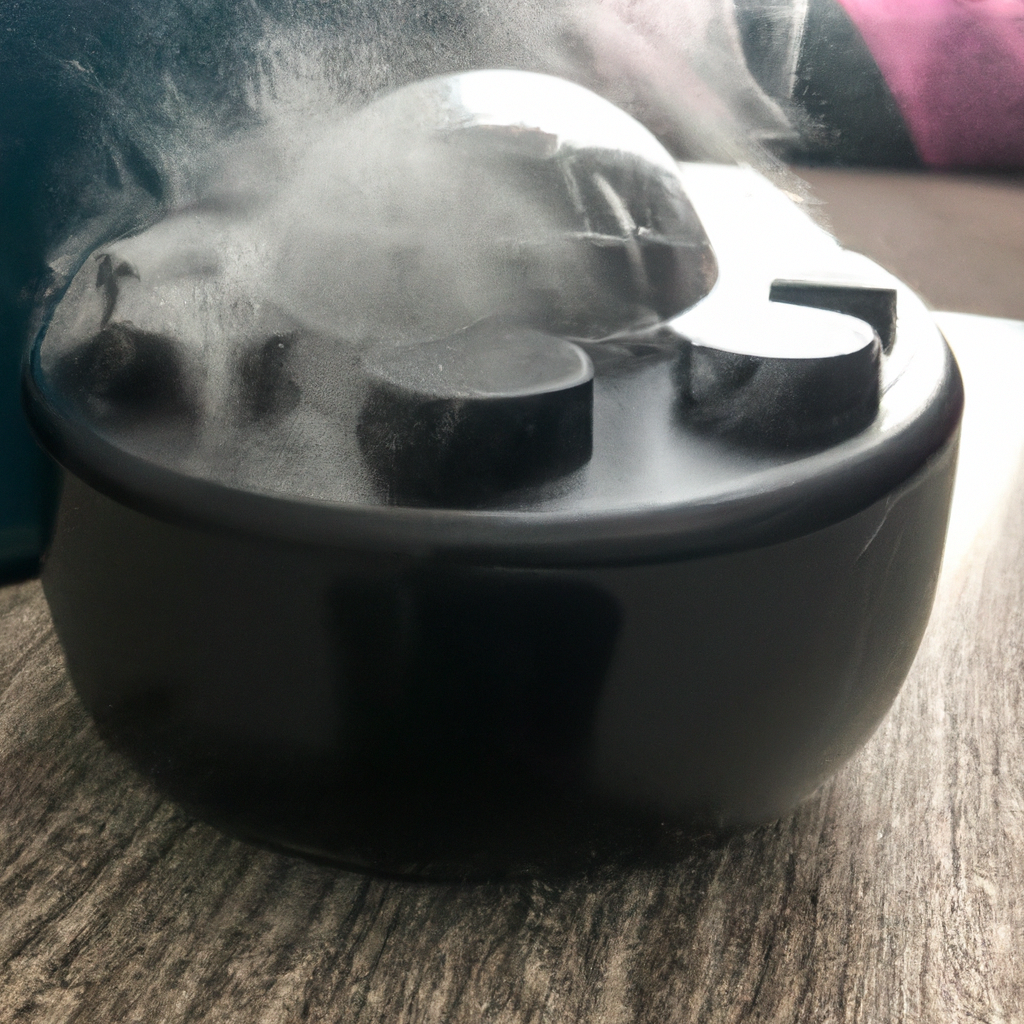Humidifiers are essential appliances to promote air quality in homes and other indoor spaces. However, using a humidifier can be daunting if users notice black stuff appearing inside the appliance.
The black stuff in your humidifier may be caused by bacteria, mold or mineral deposits. To identify the source, try cleaning your humidifier and checking for any visible buildup. If there is still black stuff present, consider replacing the filter or purchasing a new humidifier.
This article will explore the possible causes of this issue and discuss potential solutions.
The presence of black stuff in a humidifier can be alarming for many users. It is important to identify the source of the material in order to effectively address the issue.
In some cases, it may be harmless residue from cleaning products or minerals from tap water used to fill the humidifier tank. In other instances, however, the black stuff can indicate more serious problems such as bacterial growth within the humidifier.
In any case, it is essential for users to understand why there is black stuff in their humidifier so that they can take appropriate steps to resolve the problem and maintain their device for optimal performance. This article will provide an overview of possible causes and solutions for this common issue with humidifiers.
What Causes Discoloration In Humidifiers?
A dark, smoky fog lingers in the air, coating the walls and furniture with a grimy film.
This is the sign of a humidifier that’s not been properly maintained, and it’s an all-too-common phenomenon.
Humidifiers are essential to keeping indoor air moist and comfortable; however, they can become discolored over time due to several factors.

A buildup of minerals such as calcium carbonate and magnesium sulfate in water can cause this discoloration.
Minerals occur naturally in tap water and are commonly found in hard water areas.
They can be deposited onto surfaces within the humidifier which turn from white to brown or black.
Other causes of discoloration include airborne pollutants, dust particles, and bacteria that accumulate on the interior surfaces over time.
How To Prevent Discoloration
The discoloration in humidifiers can be prevented with regular maintenance and cleaning.
To prevent discoloration, it is important to regularly clean the water reservoir with a mild detergent and to replace the filter every one to three months depending on usage.
In addition, it is important to fill the water tank with distilled or filtered water since hard tap water contains minerals that can accumulate and cause discoloration.
It is also important to empty and wipe down the inside of the humidifier after each use. This helps to remove any buildup of bacteria, mold, or mineral deposits from the surface of the tank and it also prevents any debris from entering the air when running your humidifier.
Cleaning your humidifier regularly will help ensure that it remains free from discoloration and provides clean, healthy air for you and your family. With proper maintenance, you can keep your humidifier in top condition for many years to come.
Cleaning Your Humidifier To Remove Discoloration
Cleaning a humidifier to remove discoloration is an arduous task.
The dark deposits are often caused by mineral build-up from water that has been left standing in the tank for too long.
It can be an overwhelming task to try and tackle the discoloration, but with some patience and dedication it can be achieved with ease.
Utilizing a household cleaning agent such as white vinegar and an old toothbrush can help to break down the deposits and scrub away any remaining residue.
Start by filling the reservoir with a solution of equal parts hot water and white vinegar, allowing it to sit for 20 minutes before draining out the solution.
Then, use an old toothbrush to scrub away any remaining deposits on the walls of the tank before refilling it with fresh water and running it through a cycle.
The results should be immediately noticeable, leaving your humidifier sparkling clean!
With all of this hard work, it is important to understand that there may still be potential health risks associated with discoloration in humidifiers.
In order to ensure your safety, it is important to take all necessary precautions when cleaning your device.
Potential Health Risks Of Discoloration In Humidifiers
The discoloration in humidifiers can come from a variety of sources, including minerals, mold and other contaminants. While the majority of these contaminants are not hazardous to human health, there is still potential for adverse health effects due to exposure.
Therefore, it is important to understand the possible risks associated with discoloration in humidifiers.
One potential risk is that of respiratory irritation. Some substances found in humidifier water can cause skin, eye and throat irritation when inhaled.
This can be especially problematic for those with existing respiratory conditions such as asthma or allergies. In addition, some molds and bacteria can also lead to potentially dangerous infections if they are regularly inhaled or ingested.
As such, it is important to ensure that your humidifier is cleaned regularly and thoroughly in order to reduce any risks associated with the presence of contaminants in the unit.
It is also important to monitor your environment carefully after using a humidifier.
If you experience any symptoms such as coughing, sneezing or difficulty breathing after using a humidifier, it may be necessary to seek medical attention immediately as these could be signs of an underlying health problem related to exposure to contaminants found in the unit.
Conclusion
Discoloration in humidifiers is a common issue that can arise due to the presence of minerals and other buildup that accumulate over time.
It is important to understand what causes discoloration in order to prevent it from occurring in the first place, as well as taking steps to clean and maintain the humidifier regularly in order to avoid any potential health risks associated with discoloration.
Taking proactive measures when it comes to cleaning and maintaining your humidifier will help keep it functioning properly, like a well-oiled machine.
The take away message is clear: prevention is key when it comes to keeping your humidifier free of discoloration.
By understanding what causes discoloration, you can take proactive steps such as flushing out the tank regularly and descaling the unit when necessary, which will help you avoid any potential health risks associated with this build up.
Additionally, diligently cleaning your humidifier on a regular basis will ensure its optimal performance for years to come.
Like an old adage says “A stitch in time saves nine”; taking action now will save you from potentially larger issues down the road!
Overall, discoloration in humidifiers can be avoided by taking preventive measures before it ever occurs.
Being mindful of what causes discoloration and properly caring for your unit by following recommended maintenance guidelines can help avoid any unwanted buildup or potential health risks associated with discolored water.
Investing a few extra minutes into caring for your humidifier now could yield big dividends later!




